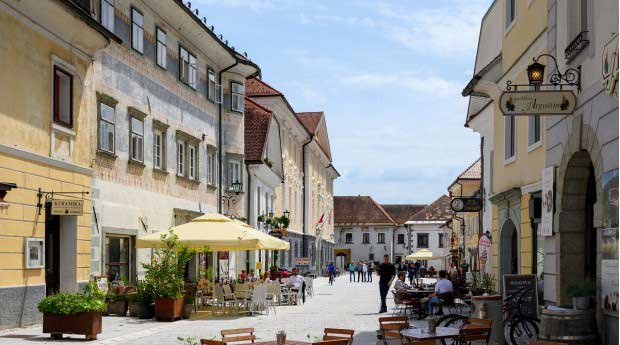Isn’t is just great when you go somewhere not expecting much, only to find it’s so much more than you imagined? That was exactly the case when I recently visited the Šlibar organic farm in Kovor, near Tržič.
In addition to very much being a working farm, four years ago the family decided to make further use of its vast grounds by adding seven rustic-style glamping huts, which have proven to be a real hit!
There are two styles of huts, as can be seen above. They differ only on the outside, while the well-appointed interiors are all pretty much the same.
Each of the wooden huts has one main room with a double bed as well as a separate nook with two single mattresses for kids.
Outdoors each hut has its own cooking area with basic equipment, while there is also a shared outdoors covered kitchen area just metres from the huts, and each hut also has its own designated toilet and shower located just a short walk from the huts. An organic breakfast, featuring produce from the farm, is included in the price of a stay.
The farm also has its own small shop that sells home-grown produce and home-produced beer and spirits, jams, pasta and other grains.
I couldn’t try it, since coeliac disease and beer do not mix, however, word has it that the home-produced beer is excellent, and judging by the crate loads that one customer was buying at the time of my visit, it must be true!

Kids will love the animals…
…and the abundance of space to be… kids. Well, you’re never too old, as they say!
The peaceful, rural location, farm and domestic animals, organic food, and great views too – it all adds up to a truly organic experience!
The farm is a destination in itself as well as a great place to base yourself for exploring, hiking and cycling in the surrounding area. Nearby hikes, which I have blogged about in the past, include Kriška gora and Tolsti vrh, Košutica, Dobrča, the Born Trail from Ljubelj to Preval, and the peaks and mountain pastures on, and below, Slovenia’s longest mountain – Košuta.
So, whether you are still undecided where to use your tourist vouchers (for Slovenian citizens only – a government measure to stimulate tourism re COVID-19), or you are planning to visit Slovenia and seeking somewhere a bit ‘off the beaten track’, the Šlibar Organic Farm could be just the place for you!
Find out more about what else to see and do in the Tržič area here.
© Adele in Slovenia


















.JPG)







